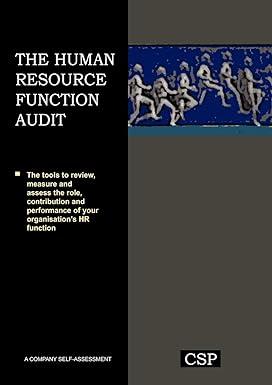Question
Kimo, owns a large estate in Hawaii on a neighbor island, earned $80 million per year. In 2019, Kimo purchased the Hawaii estate (house and
Kimo, owns a large estate in Hawaii on a neighbor island, earned $80 million per year. In 2019, Kimo purchased the Hawaii estate (house and six acres of land) for $48 million.
In 2020, the second certified appraiser named Shady documented that "The land for this estate could be zoned for a 500-unit planned unit development (PUD) hotel, whose value exceeds $50 million. The appraiser documented the condition of the property and took the position that the conservation easement had a fair market value of $49 million. [Although the land could get zoned for a PUD, at that time no one would have built it because the housing market simply did not exist.]
Two weeks earlier, the first certified appraiser named Mary competed an appraisal of a proposed conservation easement. She documented the condition of the property and took the position that the conservation easement had a fair market value of $38 million.
On January 2, 2021, sixy-four days after Shadys appraisal, Kimo took a $49 million charitable contribution deduction. He donated a perpetual conservation easement on his 6-acre parcel of land to support the local Island Community (IC), a qualified organization. Kimo gave the IC a conservation easement in compliance with Hawaii law. However, the easement reserved the right to build a water storage tower and reduced the number of residences that could be built on the estate to 20 [but the local zoning regulations had already limited development to 5 residences].
Assume that Kimo obtained a Baseline Report that provided a collection of maps, photographs, and written descriptions of the property, and the conservation values that are being protected and the reasons why it is worthy of protection, completed Form 8283 (Noncash Charitable Contributions), and had it executed by all relevant parties, including the appraiser, and the IC. Kimo received from the IC a contemporaneous written acknowledgement, for the easement.
In 2022, the IRS disallowed Kimos charitable deduction for the gift of the conservation easement in its entirety. The IRS alleged civil fraud based on the appraisal. Kimo wants you to petition the Tax Court challenging the IRS actions.
Write a tax research memo identifying three sophisticated tax issues for your client, (1) the leading deduction issue, (2) the leading penalty issue, and (3) a second relevant sophisticated (non-penalty) issue from the case. Each issue must include relevant critical facts and precisely where in the code each issue arises. (Grading mostly focuses on two issues [see grading rubric], but three issues in the memo are required).
Use the following subheadings which are expected in a tax research memo. Use the following order: Facts, Issues, Conclusions, List of Applicable Law, Discussion of Law, and Application. Do not create any other subheadings. Review both the memo example and the grading rubric for the Memo.
Step by Step Solution
There are 3 Steps involved in it
Step: 1

Get Instant Access to Expert-Tailored Solutions
See step-by-step solutions with expert insights and AI powered tools for academic success
Step: 2

Step: 3

Ace Your Homework with AI
Get the answers you need in no time with our AI-driven, step-by-step assistance
Get Started


